 Petzlover
Petzlover Irish Staffordshire Bull Terrier is originated from Ireland but Vizsla is originated from Hungary. Irish Staffordshire Bull Terrier may grow 20 cm / 8 inches higher than Vizsla. Irish Staffordshire Bull Terrier may weigh 12 kg / 26 pounds lesser than Vizsla. Irish Staffordshire Bull Terrier may live 4 years more than Vizsla. Both Irish Staffordshire Bull Terrier and Vizsla has almost same litter size. Both Irish Staffordshire Bull Terrier and Vizsla requires Low Maintenance.
Irish Staffordshire Bull Terrier is originated from Ireland but Vizsla is originated from Hungary. Irish Staffordshire Bull Terrier may grow 20 cm / 8 inches higher than Vizsla. Irish Staffordshire Bull Terrier may weigh 12 kg / 26 pounds lesser than Vizsla. Irish Staffordshire Bull Terrier may live 4 years more than Vizsla. Both Irish Staffordshire Bull Terrier and Vizsla has almost same litter size. Both Irish Staffordshire Bull Terrier and Vizsla requires Low Maintenance.
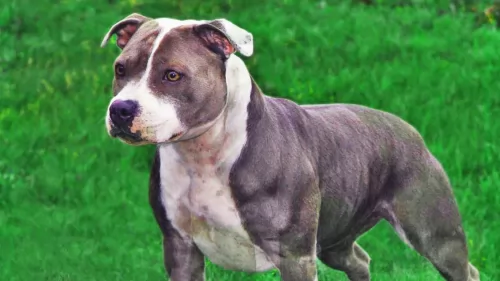 The Staffordshire Bull Terrier comes from Staffordshire, England, but the Irish Staffie was later developed by Irish breeders so its origin is essentially Ireland. They were developed from bulldogs and different terrier breeds.
The Staffordshire Bull Terrier comes from Staffordshire, England, but the Irish Staffie was later developed by Irish breeders so its origin is essentially Ireland. They were developed from bulldogs and different terrier breeds.
The dog was always used for bull baiting, but when this sport died out, the Irish breeders wanted to create a taller, leaner dog suited for dog fighting. When dog fighting was banned the breed became rare again, but today it has been restored and is essentially a popular companion pet.
 The Hungarian Vizsla or Magyar Vizsla is a hunting dog developed in Hungry. It is the smallest of the pointer-retriever type breeds. They are loyal family dogs and hunt fowl and upland game. It was rare for a hunting dog to also be a companion and family dog, but the Vizsla is. The first time the Vizsla came to the attention of anyone outside its area was 1357 in a publication written for King Louis I of Hungary. They were kept mostly by barons and warlords and preserved without any interbreeding for centuries.
The Hungarian Vizsla or Magyar Vizsla is a hunting dog developed in Hungry. It is the smallest of the pointer-retriever type breeds. They are loyal family dogs and hunt fowl and upland game. It was rare for a hunting dog to also be a companion and family dog, but the Vizsla is. The first time the Vizsla came to the attention of anyone outside its area was 1357 in a publication written for King Louis I of Hungary. They were kept mostly by barons and warlords and preserved without any interbreeding for centuries.
Through all the occupations, revolutions and world wars, the Vizsla survived. Still there were some points in their history where they were almost extinct. In the 1800’s English Pointers and German Shorthaired Pointers almost replaced them. After World War II they were almost extinct again with only a dozen or so left in the country.
Breeders across Hungry brought them back again. They were also bred in Serbia, Slovakia, Austria and Romania. They came to the states after the war and quickly were embraced. The Vizsla Club of America was formed so that they could be recognized by the American Kennel Club. This happened in 1960 and the Vizsla quickly became a champion in several AKC specialties.
The Weimaraner, the German Shorthaired Pointers, the Wirehaired Vizsla and other pointers were developed from the Vizsla and then used to re-establish the breed following World War II.
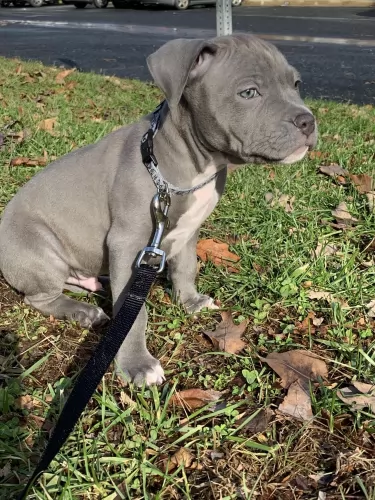 The Irish Staffordshire Bull Terrier is a medium sized pure-breed dog standing at roughly 43 to 48cm and weighing anything from 14 to 18kg.
The Irish Staffordshire Bull Terrier is a medium sized pure-breed dog standing at roughly 43 to 48cm and weighing anything from 14 to 18kg.
He has a short, smooth coat which can be a mix of colors such as fawn, tan, black or brindle. The coat can also be bi-colored such as in fawn and white or black and white. He is a powerfully built dog with short legs which are fairly wide apart.
He has a large head and short muzzle with powerful jaws.Sometimes when he pants after a hectic bout of exercise he gets a comical, grinning look on his face. The ears are semi-erect, semi-upright and he has a long tail.
Your Irish Staffy is a feisty, confident dog that has been known to have a temperament which leads towards aggression. It is why he should be trained and socialized to make him more amicable and obedient. He is an intelligent and alert dog, so won't have difficulty with training.
A well trained and socialized Irish Staffordshire Bull Terrier will get on well with children in the home as he is a playful, jovial dog, always ready for a game.
 The golden/rust colored Vizsla is easily distinguished from other breed. They are a medium sixed pointer with a lean frame and light on their feet. They have long ears that are silky to the touch and well defined muscular structure. Their nose is a red color blending in with their coat color. Their eyes and nails also blend in with the color of the coat.
The golden/rust colored Vizsla is easily distinguished from other breed. They are a medium sixed pointer with a lean frame and light on their feet. They have long ears that are silky to the touch and well defined muscular structure. Their nose is a red color blending in with their coat color. Their eyes and nails also blend in with the color of the coat.
For the most part they are some shade of golden-rust, but today there are also some solid rust dogs as well. Officially the coat can be russet gold, copper-brown, or dark sandy gold. It cannot be mahogany red or pale yellow. The coat is dense, smooth, short and without an undercoat. They have docked tails as well.
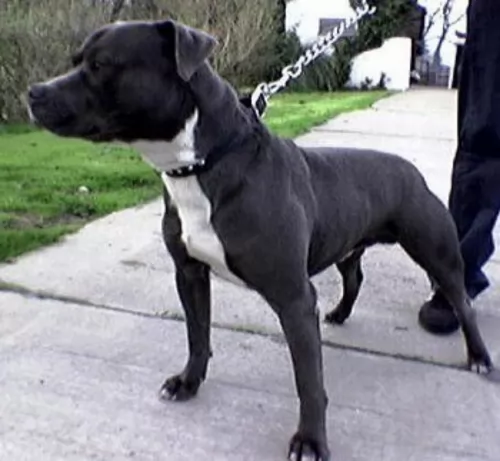 The older Irish Staffie has always been an aggressive type dog used for fighting, but today the modern breed is capable of being a splendid, entertaining, amicable pet with an even temper. He is feisty for sure, being brave, fearless, loyal and loving with his human family members.
The older Irish Staffie has always been an aggressive type dog used for fighting, but today the modern breed is capable of being a splendid, entertaining, amicable pet with an even temper. He is feisty for sure, being brave, fearless, loyal and loving with his human family members.
All it requires with this dog is to have a firm, loving upbringing, some training and socialization as well as good food and plenty of love and attention. Many dogs get labelled wrongly because of the humans that rear them the wrong way. When done correctly, the Irish Staffordshire Bull Terrier promises to be a wonderful, loving, loyal pet.
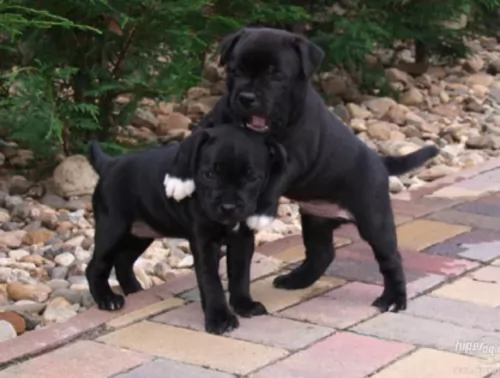 The Irish Staffordshire Bull Terrier, just like with any other dog, has a good chance of living a good number of years if he is fed properly. He can live to be anything up to between 10 and 16 years.
The Irish Staffordshire Bull Terrier, just like with any other dog, has a good chance of living a good number of years if he is fed properly. He can live to be anything up to between 10 and 16 years.
Say what you like, good nutrition and the lifestyle you provide for your Irish Staffie will determine how long he lives. An unhappy dog that has to beg for love and attention won't do well. Your Irish Staffie can live to a ripe age but he is still at risk for certain health problems.
These mast cell tumors are graded according to their location in the skin. Certain dogs like Boxers and bulldogs are more susceptible to mast cell tumors than other breeds, and the Irish Staffie isn't immune either. Most times the tumor develops in an older dog, though young dogs have also been known to develop the tumor. These tumors can be inactive for a while and then experience some rapid growth with some redness and fluid build up. Immediate veterinary intervention will be required.
 The Vizsla have few health issues but the ones they do have are quite serious. They include:
The Vizsla have few health issues but the ones they do have are quite serious. They include:
• Cancer (Mast cell, Lymphoma and Hemangiosarcoma) – as will most dogs it can be treated but is still likely to kill the dog.
• Hip dysplasia is rare, but cases have been noted. Can cause lameness and/or arthritis.
• Sebaceous adenitis – rare skin disease found more often in cats or birds than in dogs.
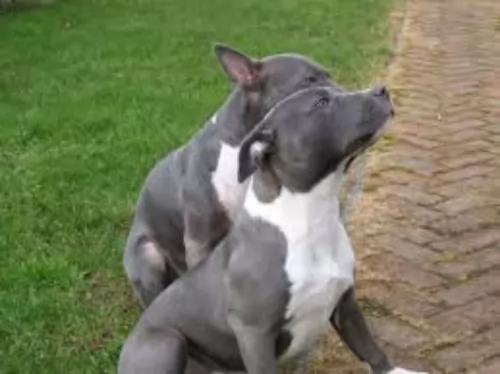 The Irish Staffie is an active dog, who is always game for anything. He will certainly need active owners who include him in all their activities. He has a lot of stamina and endurance and will want to join you on your walks, hikes and swimming. Ignoring his exercise needs can turn him into a restless, unhappy, frustrated, destructive dog.
The Irish Staffie is an active dog, who is always game for anything. He will certainly need active owners who include him in all their activities. He has a lot of stamina and endurance and will want to join you on your walks, hikes and swimming. Ignoring his exercise needs can turn him into a restless, unhappy, frustrated, destructive dog.
Having a short, smooth coat means your Irish Staffie being a low maintenance dog. He does shed a bit so his coat will need to be brushed at least twice a week to get rid of all those loose hairs. Its always a good opportunity to check him for fleas and ticks too.
If the short coat gets too dirty, a wipe down with a damp cloth can keep the coat bright and shiny. Certainly avoid bathing him too often as this can aggravate the skin.
Check his nails and trim them if they get too long. Check his ears and teeth as these are all problem areas which can contribute to your dog becoming ill.
Your Irish Staffie is such an energetic dog that he will need excellent food that promotes this energy. Whether you buy him the best commercially manufactured kibble, you want to also add in some home-made food such as cooked chicken, rice and vegetables as well as including some raw meat occasionally. The food you provide your Staffie with needs to be full of vitamins and minerals to avoid illness. Always make sure he has access to fresh, cool water.
 Feeding the puppy This is a very active dog and he need a high calorie diet as a puppy. Feed 4-5 cups in 3-4 smaller meals per day.
Feeding the puppy This is a very active dog and he need a high calorie diet as a puppy. Feed 4-5 cups in 3-4 smaller meals per day.
2.Feeding the adult Feed the adult high calorie food if you exercise her enough. Feed 3 cups of food twice a day.
4. Exercise They love to run but don’t’ overdo it until they are at least 18 to 24 months old. They stay very playful their entire lives and excel at AKC competitions. They are good at agility, field trials, scent work, obedience, conformation, dock diving, rally, lure coursing, track and barn hunt.